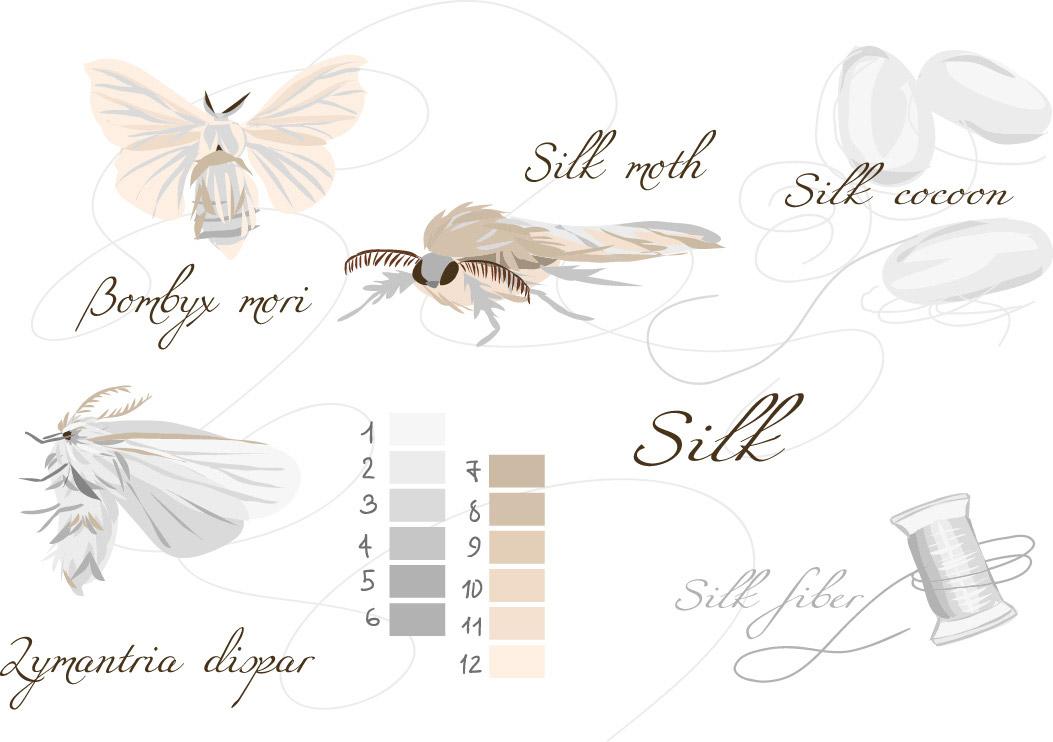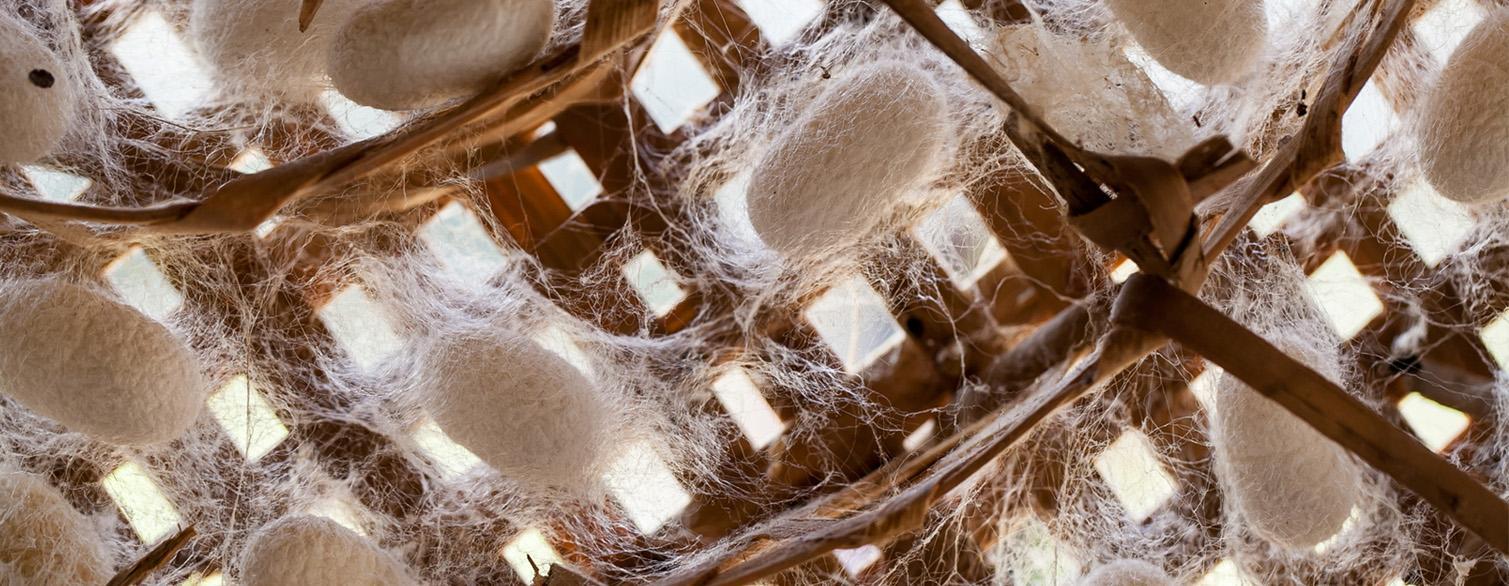Silk is the only natural continuous filament that possesses similarities with those of a chemical origin.
After studying and reproducing silk strand extrusion in the laboratory at the turn of the 20th century, the first synthetic fibers were created and called “synthetic silk“, a term that was later replaced with rayon following pressure from silk manufacturers.
The extrusion and co-extrusion technologies typical of natural silk production are still the basis for the production of numerous synthetic textiles and products.
There are two main types of silk: continuous fiber and discontinuous fiber.
The first one is obtained as a result of the operations of reeling and twisting (the heads of the filaments are combined and taken from the wrapping cocoon in skeins of parallel filaments and, with the twisting, provision is made to give the desired number of twists per meter).The second one comes from the waste of spinning silk, meaning from all those of virgin silk fibers that do not lend themselves, for a solely technology productive reason, to be processed on the mill system and all of those silk materials obtained as a residue from further processing.

FROM THE WORM TO THE THREAD
The Silk is produced by the Bombyx mori, a moth from the Bombycidae family, in the final stage of its larval life when it wraps itself up in a cocoon inside which it transforms first into a chrysalis and then into a moth. The silk filament originates in two secretory glands called sericteries located beneath the digestive tract, and is extruded as a fiber through a funnel-shaped orifice under the mouth. The sericterium is composed of two canals that run parallel to the axis of the worm’s body. Fibroin originates in the part of the canal preceding the posterior extremity of the reservoir and, through contractions, is pushed and accumulated in the reservoir itself.
Afterwards, the glands secrete the second amorphous component of silk fiber — sericin — which covers the fibroin like a sheath.
The worm, moving its head and contracting muscles, pushes the silky substance from the reservoir to the capillary tube, the end of which joins the other elementary filament that comes from the lateral tube of the second reservoir.
At the end of the process, there is a single natural composite filament called floss.
THE CHEMISTRY OF SILK
Chemically speaking, silk is a protein called fibroin, which is covered on the surface by an irregular layer of sericin, another non-structural protein that acts as glue, holding the fibroin filament together that in turn is composed of an indeterminate number of fibrils.
- Fibroin 70-80%
- Sericin 20-28%
- Fatty and waxy substances 1-2%
- Organic substances 0.3 – 0.5%
Like all proteins, sericin and fibroin are composed of a series of amino acids (primary structure) that determines a subsequent secondary structure in helices, layers, (sheet), or filaments (strand) β.
In its primary structure fibroin is mainly composed of the amino acids glycine, alanine and serin in GAGAGS form.
Sericin is richer in polar end groups such as hydroxides, carboxyls and amino groups and is generally richer in serine (about 30% of the total amino acids present).



No Comments
Sorry, the comment form is closed at this time.